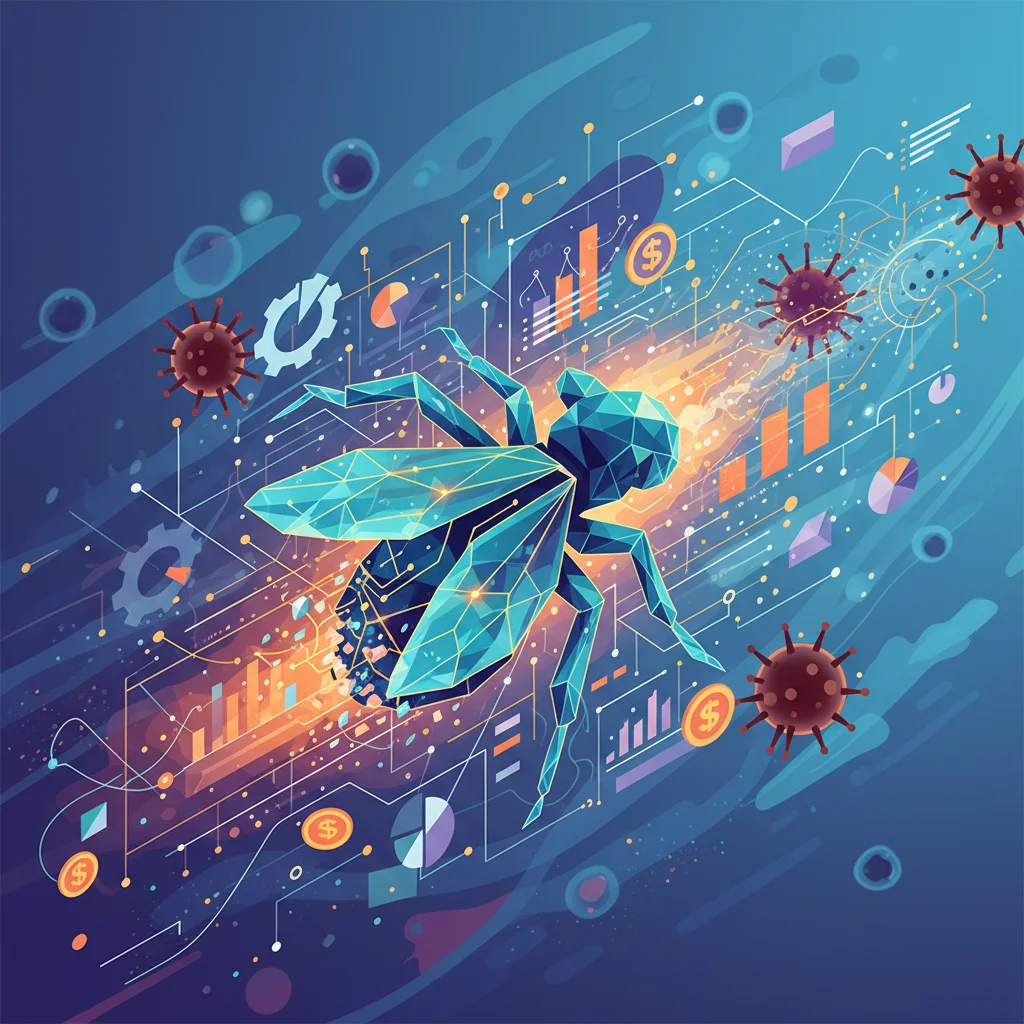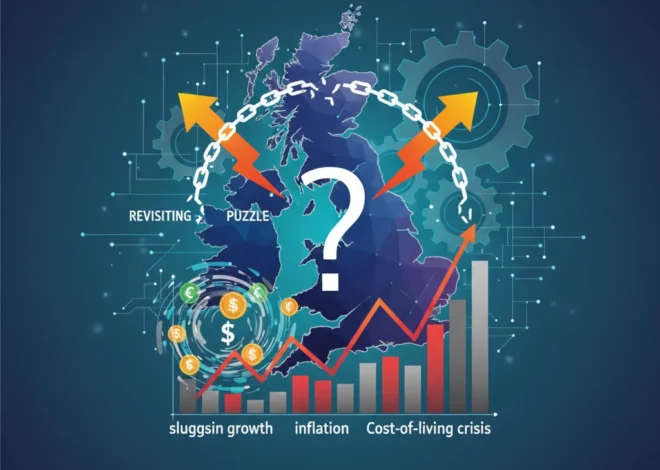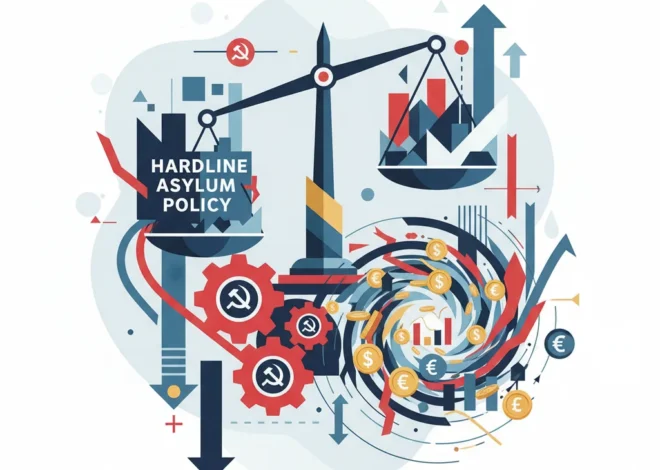
The Trillion-Dollar Bug: How AI and New Financial Models Are Fuelling the War on Superbugs
In the intricate world of global threats, some dangers are explosive and immediate, while others are silent, insidious, and creeping. Antimicrobial resistance (AMR), the phenomenon of “superbugs” evolving to defy our most powerful medicines, falls squarely into the latter category. It’s a slow-motion pandemic that, if left unchecked, threatens to unravel a century of medical progress and inflict catastrophic damage on the global economy. However, a groundbreaking new venture, backed by pharmaceutical giant GSK and the UK’s Fleming Initiative, is pioneering a new line of attack—one that fuses the raw power of artificial intelligence with innovative economic thinking.
This isn’t just a story about science. It’s a story about market failure, the future of biotech investing, and how principles from financial technology are being adapted to solve one of humanity’s most pressing biological challenges. For investors, business leaders, and anyone with a stake in the global economic landscape, this development is a critical signal of a paradigm shift in how we approach high-risk, high-reward innovation.
The Silent Pandemic’s Staggering Economic Toll
Before diving into the solution, it’s crucial to understand the scale of the problem. Antimicrobial resistance occurs when bacteria, viruses, fungi, and parasites evolve over time and no longer respond to medicines, making infections harder to treat and increasing the risk of disease spread, severe illness, and death. The numbers are stark. AMR is already directly responsible for an estimated 1.3 million deaths annually, a figure projected by the UN to swell to a horrifying 10 million per year by 2050 if no action is taken.
The impact on the global economy is equally devastating. The World Bank has warned that in a high-impact AMR scenario, the world could lose nearly 4% of its annual GDP by 2050, a cumulative loss of $100 trillion. This isn’t just about the direct costs of longer hospital stays and more expensive treatments. It’s about the knock-on effects: a less healthy, less productive workforce; disruptions to global trade and food supply chains (as agriculture is heavily reliant on antimicrobials); and the rollback of modern medical procedures like surgery, chemotherapy, and organ transplants, which all depend on effective antibiotics to prevent infection.
The core of the issue lies in a classic case of market failure—a concept central to economics. Developing a new antibiotic is incredibly expensive and time-consuming, often taking over a decade and costing more than $1 billion. Yet, the return on investment is abysmal. Unlike a blockbuster drug for a chronic condition taken daily for years, a new, powerful antibiotic is used sparingly to preserve its effectiveness. This “stewardship” model, while medically necessary, is a commercial disaster. As a result, many large pharmaceutical companies have exited the antibiotic R&D space, leaving the pipeline dangerously dry. This is the broken financial equation that the new GSK-backed venture aims to solve.
Beyond the Headlines: Why Trump's BBC Spat is a Critical Signal for Investors
A New Alliance: Fusing Big Pharma Muscle with AI Agility
The newly unveiled initiative is a collaboration between GSK, one of the few remaining large players in antibiotics research, and the Fleming Initiative, a UK-based organization dedicated to tackling AMR. The project aims to harness AI and machine learning to dramatically accelerate the discovery of novel antibiotics. Based at a new hub in London, the venture will bring together GSK’s deep expertise in drug discovery with world-class academic and biotech innovators.
The strategy is to move beyond traditional, brute-force screening methods. Instead of manually testing thousands of chemical compounds, AI algorithms can analyze vast biological and chemical datasets to identify promising candidates with a speed and precision previously unimaginable. This involves:
- Predictive Modeling: Using machine learning to predict how a potential drug molecule will interact with a specific bacterial target.
- Generative Chemistry: Employing AI to design entirely new molecules from scratch that are optimized to be effective and evade resistance mechanisms.
- Data Integration: Analyzing genomic data from resistant bacteria to pinpoint new vulnerabilities that can be targeted.
This data-centric approach mirrors the revolution that financial technology brought to the world of trading and investment analysis. Just as algorithms now parse market data, news feeds, and economic indicators to execute trades in microseconds, these new biological AI platforms will parse genomic, proteomic, and chemical data to find the molecular equivalent of an undervalued asset.
To illustrate the potential impact, consider the traditional versus the AI-enhanced approach to drug discovery.
| Metric | Traditional Drug Discovery | AI-Powered Drug Discovery |
|---|---|---|
| Initial Candidate Screening | Manual, slow, limited by physical testing capacity. Often takes years. | Computational, rapid screening of billions of virtual compounds in weeks. |
| Cost of Pre-Clinical Phase | Extremely high due to trial-and-error, extensive lab work, and high failure rates. | Significantly lower by focusing resources on a smaller number of high-probability candidates. |
| Time to Identify a Lead Compound | 3-6 years on average (source). | Potential to reduce to 1-2 years, dramatically shortening the R&D timeline. |
| Success Rate | Historically very low; thousands of starting points yield one approved drug. | Aims to substantially increase the “hit rate” by eliminating poor candidates early. |
Beyond the Beltway: The True Economic Cost of Political Gridlock
The Investment Thesis: De-Risking the Un-Investable
For the finance and investment community, the GSK/Fleming venture is more than a scientific curiosity; it’s a test case for a new investment model in a critically underserved market. By leveraging AI to slash R&D costs and timelines, it directly addresses the primary financial barrier. A shorter path to clinical trials means capital is tied up for less time, and a higher probability of success fundamentally changes the risk profile of an investment.
This shift has profound implications for the stock market performance of pharmaceutical companies. An investor analyzing GSK might see this not as a guaranteed revenue stream today, but as a long-term strategic investment in a platform that could solve the industry’s productivity crisis. If this model proves successful, it could become a blueprint for tackling other “un-investable” diseases, creating immense long-term value.
Furthermore, this initiative is part of a broader trend toward new economic models for antibiotics. Governments are beginning to experiment with “subscription-based” payment systems, often called the “Netflix model.” In this scenario, health systems would pay companies a fixed annual fee for access to a new antibiotic, regardless of how much is used. This delinks revenue from sales volume, rewarding innovation and ensuring a predictable return on investment while still allowing for responsible stewardship of the drug. This is a form of purpose-built financial technology designed to solve a specific market failure, and its success is vital for encouraging future investing in the AMR space.
India's Banking Megamerger: Forging Global Titans or 'Too Big to Fail' Giants?
The Road Ahead: A New Economic and Scientific Frontier
The fight against superbugs is at a critical juncture. The biological threat is accelerating, while the old economic model for developing solutions is irretrievably broken. The collaboration between GSK and the Fleming Initiative represents a crucial and hopeful new direction. It acknowledges that the solution cannot be purely scientific or purely financial; it must be an integrated fusion of both.
By deploying cutting-edge AI to de-risk the science and embracing public-private partnerships to de-risk the finance, this venture provides a potential roadmap for the future. Its success could unlock a new wave of investment in life-saving medicines, protect the foundations of modern healthcare, and safeguard the global economy from a multi-trillion-dollar threat. For those in the world of finance, this is a space to watch closely. The battle against the superbug may well be won not just in the laboratory, but on the spreadsheets and in the innovative financial structures that finally make it profitable to save humanity from itself.


